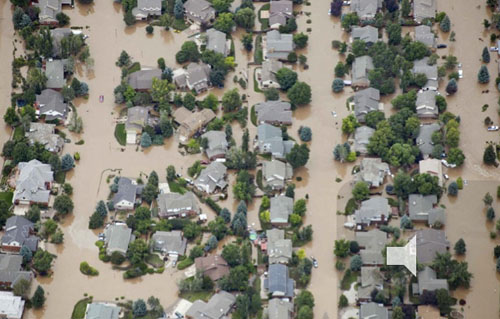The new system would affect policies for most homeowners who own property in flood-prone areas, where such coverage is required because few private companies offer flood insurance. The Federal Emergency Management Agency, which runs the National Flood Insurance Program, said the plan would start assessing properties individually according to several variables—including hurricane rainfall, coastal surges and the distance to a body of water—rather than applying one formula across an entire flood zone when assessing flood risk and contract cost.
The government also would factor in the replacement cost of the home, which could push up premiums for homeowners with higher-valued properties and decrease those with lower-cost homes.
FEMA plans to announce the new rates on April 1, 2020, and implement them starting Oct. 1 that year. They could affect more than 5 million single-family policyholders of public flood insurance.
The NFIP covers both coastal flood zones and inland river flood plains, though the policy change may have a greater impact in coastal states including Florida, Louisiana and Texas, where most of the policies are held.
The changes are likely to stoke a longstanding debate over flood insurance, with policy makers divided over how much the public should subsidize the program. While those in coastal areas have advocated for more federal funding, both environmentalists and fiscal conservatives have argued the program encourages building in risky flood-prone zones.
FEMA has increasingly struggled to pay off claims after a series of natural disasters in recent years. The government wrote off $16 billion in debt for the federal program in 2017 following claims made in the aftermath of hurricanes Harvey, Irma and Maria. Scientists say the frequency of such events is influenced by climate change.
FEMA’s current system calculates rates based on whether a home falls in a designated flood zone. Since higher-valued properties are more likely to hit the $250,000 insurance cap because they face costlier damages, “there’s an inequity,” said David Maurstad, FEMA’s deputy associate administrator for insurance and mitigation. “Lower-value homes are paying proportionately more than higher-value homes.”
“What we’re going to do is change an insurance-rating structure that hasn’t fundamentally been changed since the 1970s,” Mr. Maurstad added. “We’re going to consider more flood risk than we currently do now.”
The changes would also leverage new loss-estimation technology, said Mr. Maurstad. In recent years, private insurers have developed increasingly sophisticated models that account for variables including climate change.
The agency hopes that a more risk-sensitive pricing could attract more homeowners to purchase flood insurance, even if they aren’t required to.
“People even outside the high-risk area will have a better understanding of what the specific risk is,” said Mr. Maurstad. “They will take the responsible action and insure for flood just like they insure for windstorms, hail and fire.”
FEMA faces Congressional restrictions on how much it can increase rates, so the agency could phase in the rate changes, said Mr. Maurstad. It plans to make more details of the plan public in the coming weeks, he added.
For years, Congress has debated how to modernize the financially beleaguered flood-insurance program, created about 50 years ago because private insurers were unwilling to risk catastrophic flood losses.
Lawmakers are set to reauthorize the federal insurance program this year, after granting a short-term extension in December.














